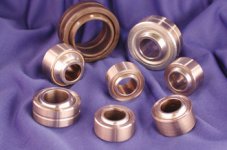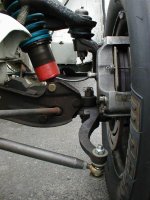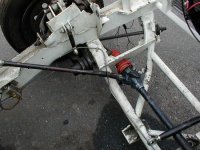SPYDERLK is right. Spherical rod ends are not supposed to be "free" or "loose" but will have some friction to them. I'm quite familiar with them, but as used in race car suspension systems in place of ball joints, tie rod ends, & other component bushings. "Open" rod ends have less friction than the ones with the teflon seals, but also allow dirt to enter easily & will wear faster. If you must lube them, use a dry lube like graphite, so it won't attract dirt/dust.
Attached is a couple pics of rod ends on a friend's drag car. First is 3/8" rod ends as tie rod ends, second shows two of three 1/2" rod ends; one that keeps the engine located fore & aft (on right) & two (one shown hanging from frame rail) that tie the frame rails & engine together. Shock absorbers also have rod ends top & bottom.


